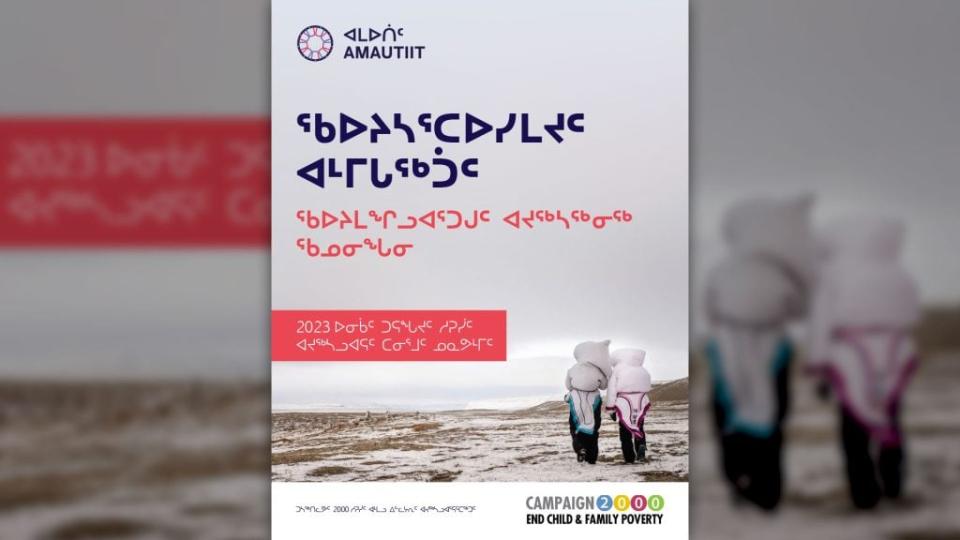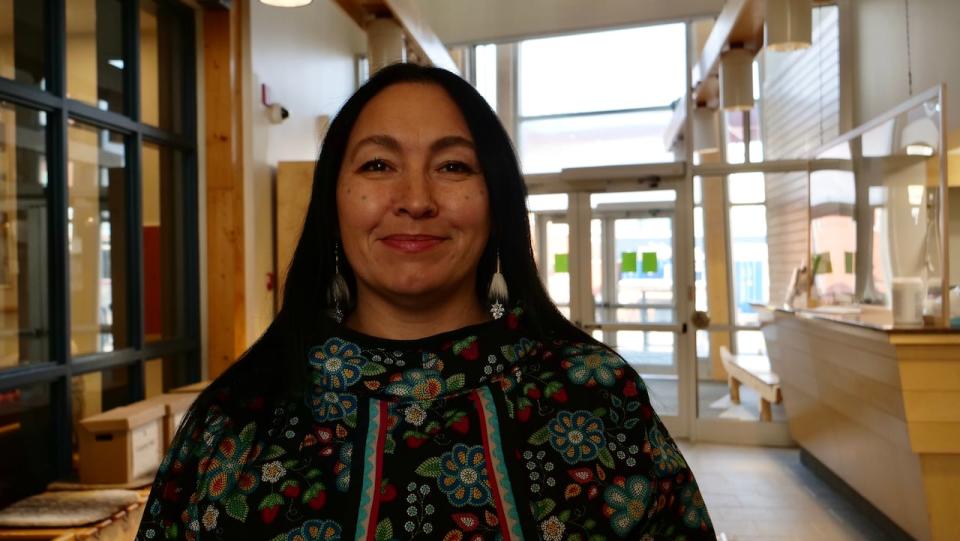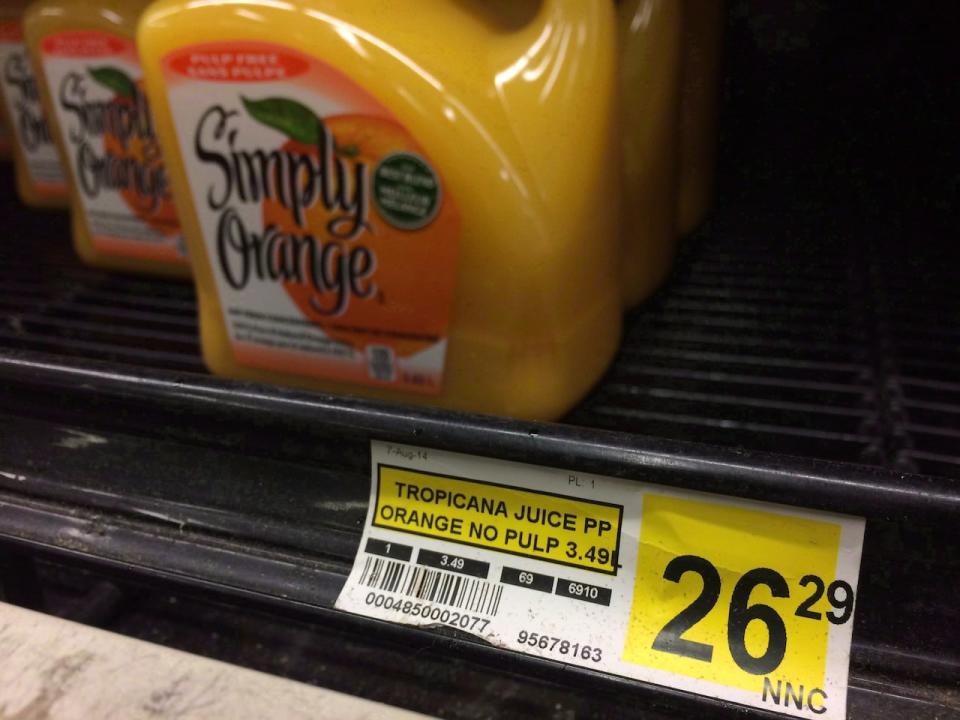Nunavut women's association releases poverty report, but advocates want to see action

Amautiit, a Nunavut Inuit Women's Association, has released its first report card on child poverty in the territory, but some advocates want to see governments take action on what is already known as a long-standing issue.
The research, released alongside the advocacy group Campaign 2000, looks at poverty rates among Inuit children and families in Nunavut.
Amautiit's president Jasmine Redfern said the findings won't be surprising to anybody who interacts with social services.
But what struck her was the rate of food insecurity in the territory since Nutrition North was introduced in 2011.
Despite the program "having undergone several revisions, food insecurity is actually at an all-time high of almost 50 per cent," she said.

Jasmine Redfern is the president of Amautiit. (Submitted by Amautiit)
Another report, but what about action?
Jane Bates, Nunavut's representative for children and youth said she's disappointed to see this report confirming what most Nunavummiut already know.
Bates said she wants to see a comprehensive action plan from different governments.
"The government needs to come together to come up with a strategy, a plan, with measurable outcomes and goals … to really address all of these issues. I think sometimes you're only looking at poverty. All of these issues are interconnected," Bates said.
Mary Anne Walker, chair of the Niqinik Nuatsivik Nunavut Food Bank board, said another report is all and well, but what Nunavummiut need is action.
"When we look at the report, it has information that has been there from every other report that's been published, the same information. But what good are numbers if we don't find the solutions to address the numbers?" she said.
The government of Nunavut introduced the Collaboration for Poverty Reduction Act in 2013, which requires action plans every five years.
Margaret Nakashuk, the territory's poverty reduction minister, was not available for an interview. Kerry McCluskey, a spokesperson for Nakashuk, said the Nunavut Roundtable for Poverty Reduction "has expressed a definition of poverty" and outlined "what communities have expressed is needed to reduce poverty in Nunavut."
McCluskey also said Nunavut's income assistance office has "detailed data" mentioned in the report and that Family Services will "provide a more detailed report moving forward."

Amautiit, an a Nunavut Inuit women's association, has released its child poverty report card for Nunavut. (Submitted by Amautiit)
Gaps in data and knowledge
Beyond the number of people on social assistance, the report said it's difficult to access more detailed data, like a breakdown of poverty rates across different demographics or communities.
It's an issue Iqaluit-Sinaa MLA Janet Pitsiulaaq Brewster said she has raised in the legislature.
"The response from the government of Nunavut is usually that there are capacity issues and that they're working on it … that it's a historical problem. So it feels like they're not taking full responsibility."

Janet Pitsiulaaq Brewster, the MLA for Iqaluit-Sinaa, pictured on Nov. 17, 2021. (Matisse Harvery/Radio-Canada)
Amautiit's report also states there is no one definition of poverty used across the territory.
Statistics Canada sets Canada's official poverty line using the market basket measure. It defines how much a family of four would have to earn to afford a basic standard of living, and that's calculated by the cost of a basket of basic goods and services, including food, clothing, shelter and transportation.
According to that measure, a family of four in the Baffin region, outside of Iqaluit, would have to make $116,368 to stay above the poverty line.
That's more than double that of families in rural parts of Ontario, Saskatchewan, Newfoundland and Labrador.

A tag lists the price of a jug of orange juice at a grocery store in Iqaluit, Nunavut on December 8, 2014. (Sean Kilpatrick/The Canadian Press)
Food insecurity since inception of Nutrition North
The report notes that annual rates of food insecurity in Nunavut ranged between 33.1 per cent and 40 per cent before the launch of Nutrition North in 2011.
After the program was fully implemented, food insecurity rates went up in Nunavut, ranging between 46 per cent and 55.6 per cent, according to the report.
Randy Legault-Rankin, spokesperson for Crown-Indigenous Relations and Northern Affairs Canada, said the number of communities supported by the subsidy has increased from 79 to 124.
He acknowledged "the retail subsidy cannot address the needs of isolated and northern communities alone, which is why NNC expanded to include the Harvesters Support Grant and the Community Food Programs Fund."
Charting a path forward
Redfern said she hadn't yet heard from the government of Nunavut about their response to the report, but she hopes it can start a conversation that goes beyond just numbers.
"Rather that we get to the deep impacts of family and child poverty, and the ways they've been exacerbated by long-standing issues such as inadequate policy," Redfern said.
Among the recommendations of the report include fixing programs like Nutrition North, expanding on locally-sourced food through farming, greenhouses, and support for those learning to hunt.
Nutrition North has gone through several evaluations, audits and studies over the years. Legault-Rankin said another evaluation, this one done internally, is underway, following approval in December 2023.
The final report on that evaluation is expected to be completed by March 2025 and will be published online.

 Yahoo News
Yahoo News 
